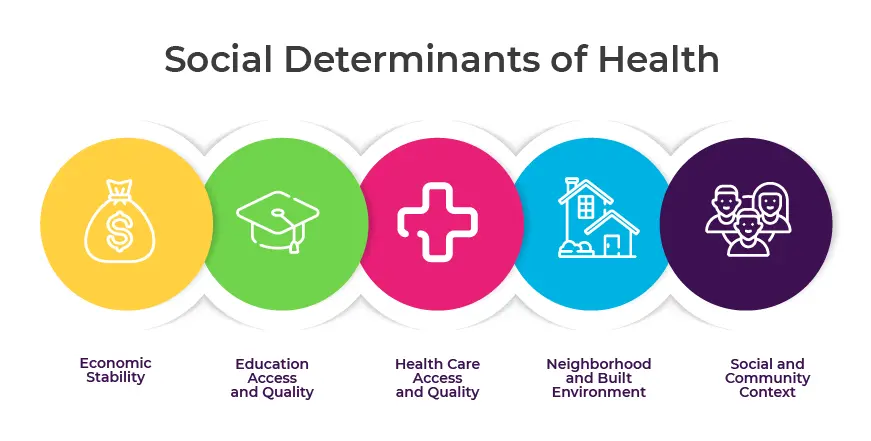Final Thoughts
- jc645587
- Dec 2, 2022
- 7 min read
Updated: Dec 6, 2022
Participating in the critical foundations of health disciplines course has broadened my knowledge of the Canadian healthcare system and social determinants of health. Each unit went further into assessing what it means to be healthy, how health is determined, and the inequalities of health care in Canada. In my course, through Athabasca University, there are a diverse variety of health care professionals participating from across Canada. This course brought us together to discuss important and evolving trends in healthcare and compare them to other areas in Canada. Participants personal clinical experiences add to discussions and allow students to discuss how the future of health care will unfold and what changes need to be talked about.
Professional Identity
At the start of the course, students were asked to reflect on our social media identity and professional roles in the health care system. Discussing how social media plays a major role in our role in health care and where personal identity comes into play was a major discussion. When using social media in professional or personal use, all usage should be considered professional even when not at work. For my profession, standards are set by the Canadian Society of Respiratory Therapists (CSRT) and the College of Allied Health Professionals of Prince Edward Island guide my practice of working as a respiratory therapist (RT). As a professional who works in health care many of us are scared to speak out due to professional bodies and workplaces silencing us. Becoming familiar with regulations of your licensing body, professional acts of conduct and ethics is also important for health professionals and using social media in everyday and our professional careers.
Interprofessional Interaction
Through various schooling of healthcare disciplines, students are taught about multidisciplinary teams that are used in healthcare systems to help patients achieve the best care possible and early discharge. It is not practical for one single health profession role to meet the needs of all patients in the health care system. Working together as an interprofessional team is the most effective and beneficial to the patients and families to receive care from a team with defined roles and scopes.

During the corona virus pandemic, proning patients was something done frequently in the intensive care units. This requires placing a critically ill patient on their stomach for sixteen hours then flipping them to their back to help with oxygenation. Usually, these patients are intubated or have a tracheostomy tube. This process is done with an RT managing the head/airway/ventilator, 3 nurses to manage the lines/torso, usually a physiotherapist if this procedure is done during the day to make sure the patient is positioned in swimmers position and usually a physician to be in the unit in case the patient codes or medications need to be administered. This is one example of how the health care team comes together to care for one patient, and how teamwork and communication is key in performing this maneuver safely. In the future, health care will need to focus on a team-based approach even more, with shortages of physicians and health care professionals across the country, we are seeing more health care neighborhoods and professions being used to their full scopes of practice.
Determinants of Health

While it was once thought that healthy populations were largely determined by a strong healthcare system responding to health needs, we now understand that the health of a population is predominantly driven by various social factors that shape the conditions in which people, families, and communities live, work, learn and play. These factors are collectively called the social determinants of health. Acting on these has the greatest potential to improve population health outcomes and to address the root causes of illness and injury before they even occur (Government of Prince Edward Island, 2022). The World Health Organization defines health as the “complete physical, mental, and social well-being, and not merely the absence of illness” (Fallon & Karlawish, 2019), but our exploration into the meaning of health shows this definition to be lacking. Absolute terms leave binary definitions of health that no longer align with our population. With increasing numbers of Canadians living with chronic disease, a new definition must include consideration to how one copes with daily life demands, and the balance of the individual with their environment (Santorius, 2006).
An in depth look at the socio-ecological model focuses on the individual and their environment past, present, and future. As seen in the image below, the model starts with the individual, moves onto family and friends, organizations, communities, and public policies. Multilevel models of health serve to organize the determinants of health, allowing for analysis of the root cause of health issues. Using models such as the image provided, the impacting determinant can be assessed at each level and strategies can be found to help support better health outcomes for specific populations.

Image3: The Socio-ecological Model (Lee et al., 2017)
Health System and Chronic Disease

Medicare is a term that refers to Canada's publicly funded health care system. Instead of having a single national plan, we have 13 provincial and territorial health care insurance plans (Health Canada, 2005). Under this system, all Canadian residents have reasonable access to medically necessary hospital and physician services without paying out-of-pocket (Health Canada, 2005). Roles and responsibilities for health care services are shared between provincial and territorial governments and the federal government (Health Canada, 2005). The provincial and territorial governments are responsible for the management, organization, and delivery of health care services for their residents (Health Canada, 2005). The Canadian health act (CHA) is the federal health care insurance legislation and the principles that govern this system are comprehensiveness, universality, portability, and accessibility to reflect equity and solidarity (Health Canada, 2018).
The health care needs of patients have not remained the same and have evolved exponentially over the years. Despite technology and medical advances, the CHA needs to evolve with the growing nature of the populations’ health to provide the best care to Canadians. The CHA states that universal coverage includes “medically necessary” hospital and physician services (Flood and Thomas, 2016); however, there are still gaps in the universality of health care coverage which has created inequities in Canada’s health care. Under the CHA, vital services such as outpatient pharmaceuticals, dental care, long-term care, and many mental health services are excluded (Flood and Thomas, 2016). The lack of publicly funded accessibility to these vital services has created health disparities, specifically among the lower-income population versus the higher-income population. Ultimately, this has led to more privatization and demonstrates the urgent need to modernize the CHA.
Vulnerable Populations
One of the vulnerable populations in Canada investigated in this course, is the Indigenous population and their place in the health care system. Experiences of discrimination are commonplace, with patients noting abusive treatment, stereotyping, and a lack of quality in the care provided, which discourage Indigenous people from accessing care. In the province of PEI, there are multiple First Nations mental health and culturally appropriate resources available on all the First Nation reserves on PEI. Both Abegweit and Lennox Island First Nations communities are staffed with full time mental health and addictions clinicians, social workers, psychiatrist, mental wellness nurse, community health representative, an Indian Residential School Survivor’s outreach program and HELP (Home Enhancement Life Skills Program) group for adult men and women (Native Council of Prince Edward Island, 2021).
Having said this however, the NCPEI suggests the Island’s off-reserve Indigenous population is experiencing disproportionately high rates of chronic disease and mental health issues. It revealed the off-reserve Indigenous population doesn't feel that Health P.E.I. acknowledges either the need for cultural support or the challenges it has (Native Council of Prince Edward Island, 2021). Work must be undertaken from a system perspective to address the disparity created by the social determinant and implement transformative policy to eliminate systemic racism and incorporate traditional healers into the collaborative care team to improve health outcomes for our Indigenous patients.
Future in Health Care

There are many things needed to change to improve the future of health care in Canada. Resources need to be reviewed, funding needs to be improved and the system must be changed to match the changing demographic, growing need, and shifting population. Health care in the future must be accessible to all Canadians despite location, social determinants, and vulnerability. Shifting our focus from acute care to preventative medicine and primary care will be beneficial with our aging population and chronic diseases on the rise. Homecare, public health, primary care and community health care workers such as pharmacists should be examined. Health care practitioners should be used to their full scopes within the system.
Lastly, a focus on technology, tele health programs such as maple, communicating to patients virtually and accessing health care providers at the click of a patient’s fingertips is the direction we need to be heading in. Alternate acre models, increasing access for patients and long term follow up/support at home is very important to consider In closing, this course has really opened my eyes at the Canadian healthcare system and the challenges it faces now and in the future. Acknowledging that systemic issues are not just a provincial problem, but a federal problem across the country is concerning. There are multiple factors of connectedness throughout the system and becoming aware of the determinants of health, regulations, policies and the Canadian health care system has expanded my knowledge and allowed me to think about how the system needs to change for the future.
References
College of Allied Health Professionals of PEI. College of Allied Health Professionals of PEI.
(n.d.). Retrieved October 1, 2022, from https://www.cahppei.ca/
Fallon, C. K., & Karlawish, J. (2019). Is the WHO Definition of Health Aging Well?
Frameworks for "Health" After Three Score and Ten. American journal of public health,
109(8), 1104- 1106. https://doi.org/10.2105/AJPH.2019.305177
Flood, C. M., & Thomas, B. (2016). Modernizing the Canada Health Act. Dalhousie Law
Journal, 39(2), 396-411. https://doi.org/https://papers.ssrn.com/sol3/papers.cfm?
Health Canada. (2018, February). Canada Health Act: Annual Report 2016-2017
(Publication No. 170403). Government of Canada.
Health Canada. (2005, May 16). Canada Health Act - Links to Provincial and Territorial
Health Care Web Resources. Retrieved October 1, 2022, from
health-care-system-medicare/provincial-territorial-health
Government of Prince Edward Island. (2022). 2021 Chief Public Health Officer Report.
Retrieved on October 16, 2022 from
web.pdf.
Native Council of Prince Edward Island. (2021, September 29). A Path Forward:
Sartorius N. (2006). The meanings of health and its promotion. Croatian medical journal,
47(4), 662–664. https://www.ncbi.nlm.nih.gov/pmc/articles/PMC2080



Comments